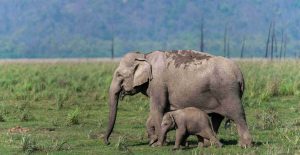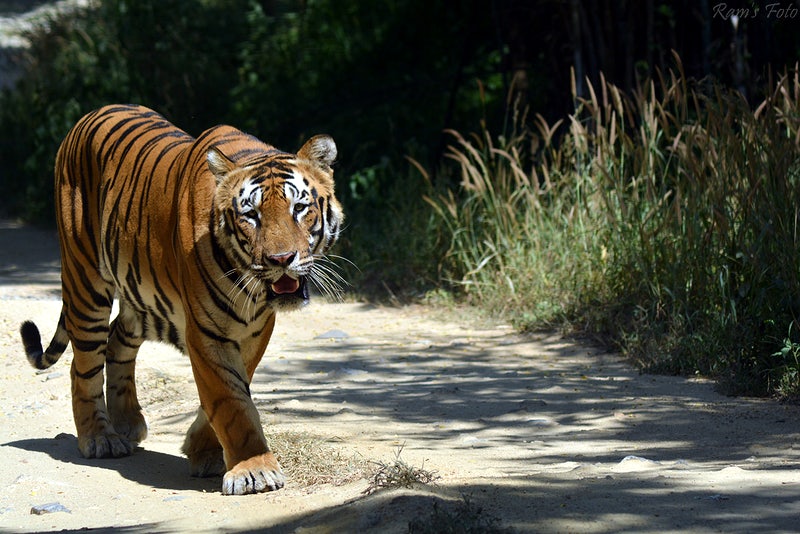Jim Corbett National Park, named after the famous hunter and conservationist Jim Corbett, is one of India’s most popular national parks. Located in the Nainital district of Uttarakhand, it is renowned for its rich biodiversity and as a haven for wildlife enthusiasts. Established in 1936, it is the oldest national park in India and was the first to come under the Project Tiger initiative. This guide will provide you with all the information you need for a visit in 2024, including the best time to visit and how to reach the park.
1. Best Time to Visit Jim Corbett National Park
Jim Corbett National Park is open to visitors from mid-November to mid-June. The best time to visit depends on what you wish to experience:
A) Winter (November to February)
Ideal for Wildlife Viewing: The winter months are perfect for spotting wildlife, including tigers, as animals come out to bask in the sun.
Pleasant Weather: The temperature ranges between 5°C to 30°C, making it comfortable for safaris.
B) Summer (March to June)
Best Time for Tiger Sightings: As the temperature rises (between 20°C to 40°C), animals, especially tigers, frequent the water bodies, increasing the chances of sightings.
Fewer Crowds: The summer heat means fewer visitors, offering a more peaceful experience.
C) Monsoon (July to October)
Park Closure: Most parts of the park are closed during the monsoon due to heavy rainfall and the breeding season of animals. However, Jhirna Zone remains open throughout the year.
Lush Greenery: The monsoon transforms the park into a lush green paradise, but wildlife sightings are rare.
2. How to Reach Jim Corbett National Park
Jim Corbett National Park is well-connected and can be reached by air, rail, and road. Here are the details:
- By Air – The nearest airport to Jim Corbett National Park is Pantnagar Airport, about 80 kilometers away. However, this airport has limited flights. The better option is Indira Gandhi International Airport in New Delhi, approximately 260 kilometers from the park. From the airport, you can hire a taxi or take a bus to the park.
- By Train – The nearest railway station to Jim Corbett National Park is Ramnagar, which is well-connected to major cities like Delhi, Lucknow, and Varanasi. Some popular trains are:
Ranikhet Express: Connects Delhi to Ramnagar and runs daily.
Uttarakhand Sampark Kranti Express: Another good option from Delhi.
From Ramnagar station, the park is just 15 kilometers away, and you can easily hire a taxi or take a bus to reach the park.
- By Road – Jim Corbett National Park is well-connected by road to major cities:
1. From Delhi: The park is about 260 kilometers from Delhi, and it takes approximately 5-6 hours to reach by car. You can take the NH9 route via Ghaziabad, Moradabad, and Kashipur.
2. From Dehradun: The park is around 232 kilometers from Dehradun, and it takes about 6-7 hours to drive via Haridwar and Kashipur.
3. From Nainital: A short distance of 65 kilometers, taking about 2 hours by road.
Several state-run and private buses also operate from cities like Delhi, Dehradun, and Nainital to Ramnagar.
3. Zones in Jim Corbett National Park

The park is divided into different zones, each offering a unique experience:
a) Dhikala Zone
Most Popular: Known for its diverse wildlife and stunning landscape.
Accommodation: Offers forest rest houses and the famous Dhikala Forest Lodge.
Activities: Jeep safaris, elephant safaris, and bird watching.
b) Bijrani Zone
Scenic Beauty: Known for its dense forests and grasslands.
Wildlife Sightings: High chances of spotting tigers, elephants, and deer.
Activities: Jeep safaris and nature walks.
c) Jhirna Zone
Year-Round Access: The only zone open throughout the year.
Wildlife: Good for spotting sloth bears, tigers, and wild elephants.
Activities: Jeep safaris and bird watching.
d) Dhela Zone
Newly Added: Opened in 2014, known for its mixed forests and grasslands.
Wildlife: Tigers, leopards, and elephants.
Activities: Jeep safaris.
e) Durga Devi Zone
Hilly Terrain: Known for its picturesque landscape and riverine forests.
Bird Watching: Ideal for bird enthusiasts, home to a variety of bird species.
Activities: Jeep safaris and nature walks.
f) Sitabani Buffer Zone
Historical Significance: Believed to be the place where Sita, from the epic Ramayana, stayed during her exile.
Wildlife: Tigers, leopards, and elephants.
Activities: Jeep safaris and bird watching.
- Safari Booking and Accommodation
- Safari Booking
Safaris can be booked online through the official website of Jim Corbett National Park or at the Ramnagar office. It is advisable to book safaris in advance, especially during peak season, to avoid last-minute hassles.
- Accommodation
Jim Corbett National Park offers a range of accommodation options, from budget to luxury:
Forest Rest Houses: Located inside the park, offering a unique stay amidst nature.
Resorts and Hotels: Several options are available in and around Ramnagar, catering to different budgets and preferences.
4. Tips for Visiting Jim Corbett National Park
a) Book in Advance: Ensure to book safaris and accommodations well in advance.
b) Clothing: Wear comfortable and light clothing, preferably in earthy tones.
c) Essentials: Carry sunscreen, a hat, sunglasses, and water.
d) Respect Wildlife: Maintain silence during safaris, do not litter, and follow the instructions of your guide.
e) Safety: Stay inside the vehicle during safaris and maintain a safe distance from animals.
Conclusion
Jim Corbett National Park offers an unforgettable experience for nature and wildlife lovers. Whether you are looking to spot the majestic Bengal tiger or simply enjoy the serene beauty of the forest, this guide should help you plan your visit for 2024.
Remember to respect the park’s rules and the natural habitat of its residents to ensure a safe and enjoyable trip. Happy exploring!
Read Our Blog: 10 Best Places to Visit in Kausani
